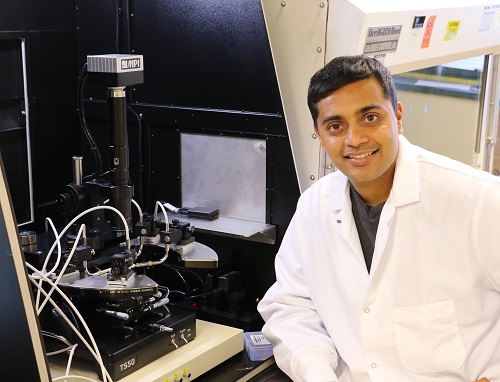
by Nakeirah Chrisitie
photo by Jon Atherton
This month, Protopedia named the structures for cytochrome nanowires one the highest impact structures of the 21st century. The wires have recently been shown to be built from the polymerization of the protein hexaheme cytochrome OmcS, rather than the previously hypothesized PilA. These cytochrome wires are used by soil bacteria Geobacter and are necessary for long-range extracellular electron transfer for respiration. In turn, these nanowires and the soil bacteria from which they come have a myriad of important influences and potential applications including bioremediation and conversion of organic wastes to energy. Here in Yale’s MBB department and West Campus’ Microbial Sciences Institute, , The Malvankar Lab (MBB/West Campus faculty) is working on understanding how Geobacter performs electron transfer via these nanowires and this April published a 3.7 Å resolution cryo-EM structure of polymerized OmcS proteins in Cell, revealing the unexpected nanowire composition.
Correction: This article has been updated to include that the Malvankar lab is also a member of the Microbial Sciences Institute at West Campus and to attribute the picture of Dr. Malvankar to Jon Atherton.